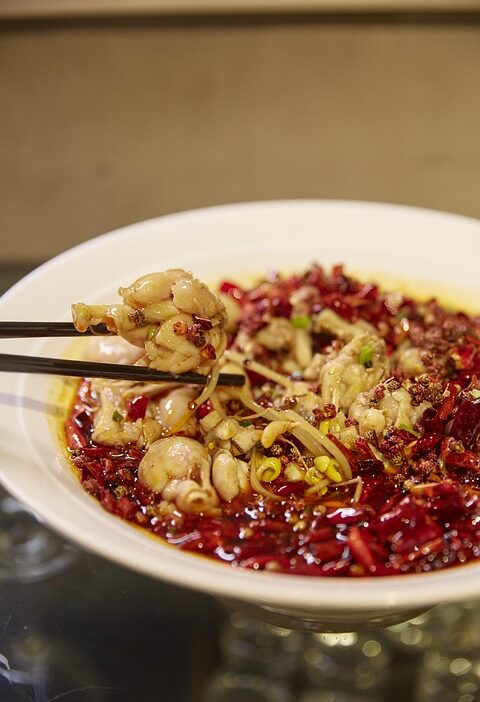When it comes to heat in cuisine, few ingredients can claim the spotlight quite like chili peppers. With a kaleidoscope of colors, flavors, and heat levels, these tiny pods pack a punch that can elevate any dish. For culinary adventurers and spice enthusiasts, some peppers stand out for their extraordinary heat. Let’s explore the fiery world of the hottest peppers and how they play an integral role in global cuisines.
Understanding Heat: The Scoville Scale
Before diving into individual peppers, it’s essential to grasp the scale used to measure their heat: the Scoville Scale. Developed in 1912 by pharmacist Wilbur Scoville, this scale quantifies spiciness in Scoville Heat Units (SHU). A bell pepper has a SHU rating of 0, while the hottest peppers can soar into the millions. Understanding this scale is key for anyone daring enough to experiment with the hottest varieties.
The Fiery Contenders
While many peppers contribute heat to dishes worldwide, a select few reign supreme. Here are some of the hottest peppers you’ll find in the culinary world:
1. Carolina Reaper
Boasting an average heat of around 1,641,183 SHU, the Carolina Reaper holds the title for the world’s hottest pepper. Developed by Ed Currie in South Carolina, this pepper features a fruity flavor, which is often overshadowed by its intense heat. It has become synonymous with extreme eating challenges and is often used to make hot sauces that promise to deliver a fiery kick.
2. Trinidad Moruga Scorpion
Hailing from Trinidad, this pepper is not just known for its blistering heat—averaging 1,463,700 SHU—but also for its fruity, floral taste. The Trinidad Moruga Scorpion offers a unique flavor profile that makes it a favorite among chefs looking to add depth to their spicy dishes. It’s often used in Caribbean cooking and can elevate salsas and sauces alike.
3. 7 Pot Douglah
With an average heat level of 1,853,936 SHU, the 7 Pot Douglah is one of the hottest natural peppers. Its dark brown color and wrinkled skin give it an unusual appearance, but it is prized for its intense heat and rich, earthy flavor. Typically used in spicy stews, sauces, and chutneys, this pepper is a staple in Trinidadian cuisine.
4. Komodo Dragon
Developed in England, the Komodo Dragon pepper can reach a heat level of 1,382,118 SHU. This pepper’s sweet and fruity taste complements its heat, making it versatile for various dishes, from curries to marinades. Its vibrant red skin and unique flavor profile make it a favorite among chefs seeking to balance heat with sweetness.
5. Ghost Pepper (Bhut Jolokia)
Once recognized as the hottest pepper in the world, the Ghost Pepper averages around 1,041,427 SHU. Originating in India, it has a smoky flavor that deepens various culinary applications. Ghost peppers are often dried and ground into powder, making them an ideal seasoning for those seeking to amplify heat in any dish.
6. Habanero
The habanero is a popular choice for many spice lovers, typically measuring between 100,000 and 350,000 SHU. Known for its fruity and floral notes, this pepper is a staple in Mexican cuisine, featured in salsas, sauces, and marinades. Despite its heat, the habanero’s flavor makes it user-friendly for those still testing the waters of spiciness.
Culinary Applications
The fiery peppers mentioned above are not just for the heat; they are meant to enhance flavors in dishes. From traditional salsas and chutneys to contemporary hot sauces and gourmet dishes, these peppers can add complexity and excitement to any meal. However, using them requires caution—the heat can be intensely concentrated, and a little goes a long way.
Tips for Cooking with Hot Peppers
-
Start Small: When venturing into the realm of fiery peppers, begin with a small amount and gradually increase to taste.
-
Combine Flavors: Pairing hot peppers with sweet, sour, or creamy ingredients can help balance their heat.
-
Use Oils and Marinades: Infusing oils or soaking peppers in marinades can allow you to control the heat level while still enjoying the flavor.
- Safety First: Always wear gloves when handling exceptionally hot peppers, and avoid touching your face, especially your eyes.
Conclusion
For those brave enough to ‘face the fire’, the world of hot peppers offers a culinary adventure like no other. From kitchen experiments to record-breaking challenges, spicy cuisine has captivated food lovers around the globe. Whether you’re incorporating them into everyday dishes or savoring them for the thrill of heat, these mighty pods have proven that a touch of fire can transform any meal. So, muster up your courage, and don’t be afraid to turn up the heat!



